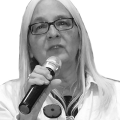News & Articles
Browse all content by date.

Just as it was when we were in school, what our children and grandchildren see and hear today will become the foundation of our beautiful city and people.
Interesting and endearing as the diversities of our neighborhoods are, east to west, each picturesque and charming in their own way, those differences are paired with inequities and disparities in our schools. This is nothing new. There are many reasons for this, most based on Duluth’s geography and history.
A large rocky ridge runs along all of Duluth, a couple of miles up from the lakeshore. The difficulties of traveling such steep hills, as well as accessibility to the lake for industry and transportation, meant that the city initially grew within the basin below the Skyline Parkway, eventually extending 26 miles from east to west but less than 3 miles north to south. (I am speaking in “Duluth” language here; we know, of course, that the city lies diagonally northeast to southwest on the map.) The west and central corridors of Duluth, near a natural harbor and river that attracted industry, grew working-class neighborhoods. The east end was where the owners of industry and other people of influence established neighborhoods. Duluth’s schools have reflects its neighborhoods ever since.
We Duluthians value equity, particularly in our schools. We are concerned that schools in our western and central corridors do not perform on the same academic level as the schools in the eastern end of town. I am a product of Duluth public schools, a Denfeld graduate, and have appreciated very much the fine teachers and education I received. Yet, even as a high school student during the 1960s, I could see that there were curricular and extracurricular opportunities available at other schools that we did not have at Denfeld.
That such educational disparities continue is a disservice to Duluth’s students, communities and future, especially considering that the State of Minnesota contributes more than $6 million per year in Compensatory Education funding to ISD 709. This funding is intended to specifically address those inequities that arise from economic situations. (The funding is based on the number of students eligible for free/reduced lunch.)
I was shocked to find that ISD 709 has no obligation to distribute this money equitably among the schools that generate it. Instead, the funding is distributed across the district in a formula that must be too complex for me to understand. For example, Denfeld High School receives this year about 80 percent of the income generated by its poorest students, and East 400 percent. This pattern is repeated in the middle and elementary schools. How did this ever happen?
A fair distribution of Compensatory Education funds would not solve all of Duluth’s educational disparities, but it would be a beginning and show a true commitment to equity. Three school board members called a special meeting in November to address the problem. In a 3-3 vote, a motion to change the distribution by 2019 failed.
Two of those school board members will be replaced in January. Where will that leave the Compensatory Education funding and the children it is intended to help? Will the new school board be willing to walk the talk of educational equity and opportunity for the children of Duluth, and for Duluth’s future?
Linda is a member of the Bois Forte Band of Ojibwe and a professor of American Indian Studies at the University of Minnesota Duluth.
| Tweet |


